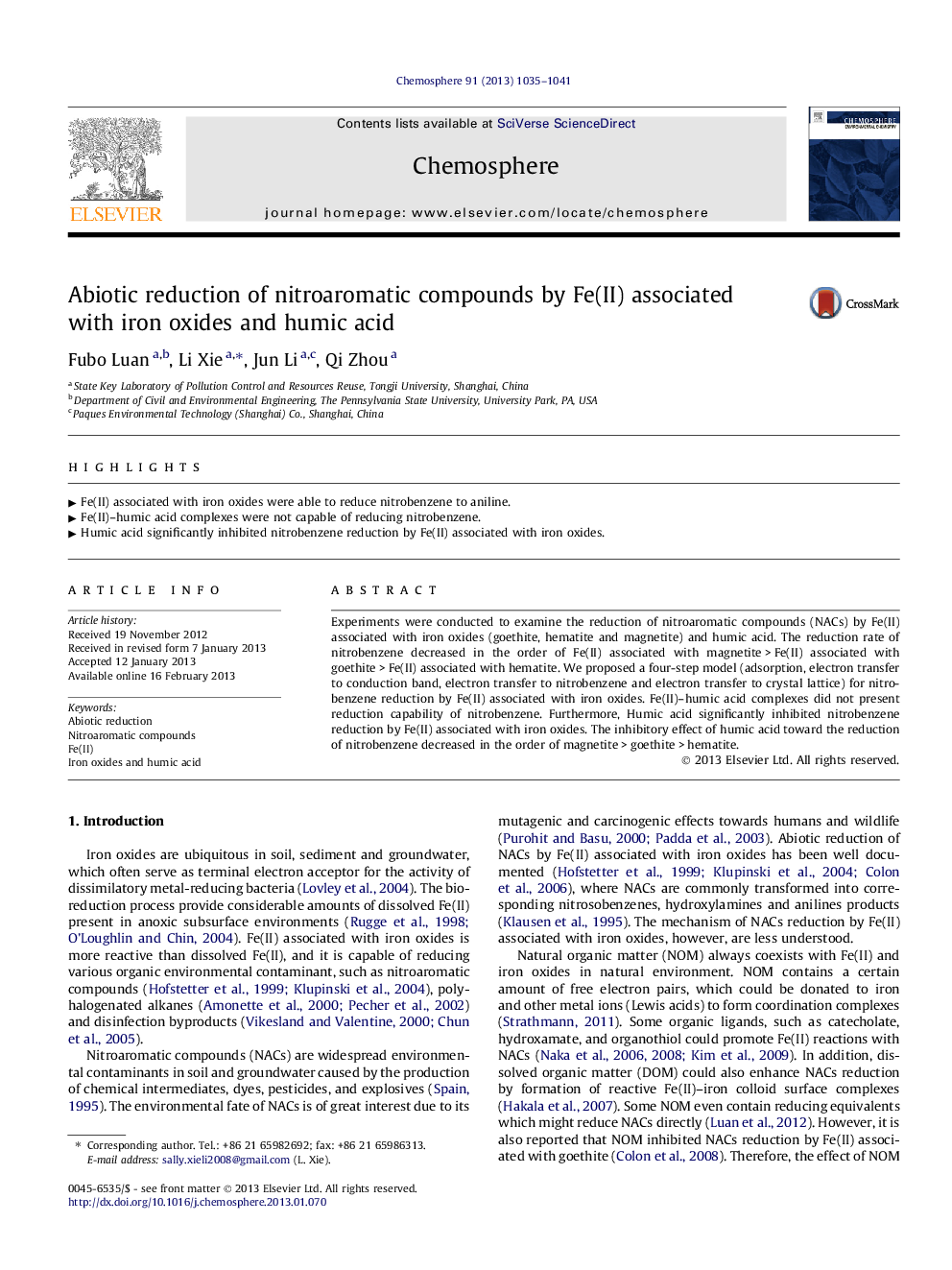| Article ID | Journal | Published Year | Pages | File Type |
|---|---|---|---|---|
| 4409361 | Chemosphere | 2013 | 7 Pages |
Experiments were conducted to examine the reduction of nitroaromatic compounds (NACs) by Fe(II) associated with iron oxides (goethite, hematite and magnetite) and humic acid. The reduction rate of nitrobenzene decreased in the order of Fe(II) associated with magnetite > Fe(II) associated with goethite > Fe(II) associated with hematite. We proposed a four-step model (adsorption, electron transfer to conduction band, electron transfer to nitrobenzene and electron transfer to crystal lattice) for nitrobenzene reduction by Fe(II) associated with iron oxides. Fe(II)–humic acid complexes did not present reduction capability of nitrobenzene. Furthermore, Humic acid significantly inhibited nitrobenzene reduction by Fe(II) associated with iron oxides. The inhibitory effect of humic acid toward the reduction of nitrobenzene decreased in the order of magnetite > goethite > hematite.
► Fe(II) associated with iron oxides were able to reduce nitrobenzene to aniline. ► Fe(II)–humic acid complexes were not capable of reducing nitrobenzene. ► Humic acid significantly inhibited nitrobenzene reduction by Fe(II) associated with iron oxides.
